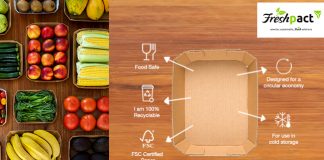
Photo: FW Archive
The main goal of Lamb and Mutton SA for 2016 is to keep the consumer informed on how to use lamb and mutton (even the cheaper cuts) in a modern, convenient and economic way. In doing so, we’ll call upon the expertise of butchers, celebrity braai-masters and top chefs. But who is it we want to reach? Who exactly is the consumer of our products? Here we share good new for the lamb and mutton industry in terms of consumer trends.
READ:Managing a farming business in financial distress
SA has one of the most diverse populations in the world. But although many unmeasurable (and unpredictable) factors influence the consumer, some aspects can be measured. The grouping of the population on a rural/urban basis quickly lost its value as the gap between rural and urban markets shrank – and consumer behaviour became more and more similar in both markets.
Consumer income levels are the biggest underlying forces of consumer behaviour
By contrast, the Living Standard Measure (LSM – see table below) groups diverse consumers together based on similar living standards (and behaviours). Every group has its own perception of ‘quality’ – an important consideration when trying to market a product that fulfils their requirements.
Income levels are one of the biggest underlying forces of consumer patterns, especially for products sold at a premium.
However, just because consumers can afford a product, doesn’t mean they will want to buy the product. Consumers must be ‘empowered’ with information that will create the need to buy the product.
In turn, the ‘desire’ to buy a certain product can become a trend. Some trends have a short life-span and are created by pop culture and the media; other trends are more sustainable and become part of a person’s lifestyle.
International research company Mintel Food and Drink recently issued its report on 2016’s top food trends. The good news is that quite a few of these trends fit SA’s lamb and mutton industry like a glove!
2016’s top food trends applied to SA’s muttom and lamb industry
- Fresh Meat: the trends ‘Artificial: Public Enemy No 1’ and ‘Diet by DNA’, for example, show that consumers are aware of the importance of eating fresh food, as close to its natural form as possible. They are shying away from processed foods with long lists of ingredients and preservatives. More importantly, the consumer in general sees fresh meat as a primary protein source with various health benefits.
- Fat is good for you: because of this, the consumer trend, ‘Fat sheds stigma,’ is ideal for the producer of mutton and lamb. For a few years, the consumer had a distorted picture of mutton and lamb. Everyone was concerned about cholesterol levels and ‘banned’ red meat from their diets. Now the experts reckon that not all fat is bad.
- Free range: At the same time, ‘Eco is the new reality,’ and the consumer is also concerned about the environment and the treatment of animals. They want ‘guilt- free’ food. This is another plus for the industry – consumers need to be made more aware of the fact that most of SA’s sheep herds are free-grazing.
- Products should be associated with their origin: another consumer trend that could contribute to the increased consumption of SA mutton and lamb is the ‘Based on a true story’ element. Consumers want to learn more about the origin of the product and speak to the producer. According to this trend, products with names that can be associated with their origin, such as Karoolam, could well become more popular on menus and on shop shelves.
How to reach consumers
The SA food trade market is dominated by names such as Pick n Pay, Shoprite, Checkers, Spar and Woolworths and this is also where most consumers make their purchases.
Apps and websites make it possible for them to get new recipes for the ingredients they have in stock. Mutton producers and dealers need to use these platforms to market their products. The more specific, the better. The more unique the product, the easier the consumer will remember it, buy it and tell others about it.
Generally, when it comes to lamb and mutton, the consumer takes into account the following characteristics:
- Meat must look (nice colour) and smell fresh;
- Packaging must be smart and hygienic;
- The R/kg ratio must be within the consumer’s budget;
- The meat should not have excessive fat.
| South Africa’s Living Standard Measure groups
LSM 1-4: The low income consumer. In 2013, about 22% of the population was in this group, with an average monthly income of R2 372. They spend up to 50% of their income on food, and are therefore very price sensitive. Most stay in rural areas; only 15,9% stay in the cities. The group has little to no access to basic services. Individuals have some exposure to high school education but no matric. The group’s age varies between 15 to 24 and 50+. LSM 5-7: Approximately 53,5% of the population are middle-class consumers with an average monthly income of R7 683 and access to a variety of media channels. A group of 25-49-year-olds is represented in LSM 6 and the lower segment of LSM 7; the higher segment of LSM 7 consists of 25-34-year-olds. All LSM 7 consumers have at least matric, although a large percentage is still unemployed. LSM 8-10: With an average monthly income of R25 725, these consumers live in urban areas. Most have matric or a higher qualification. They have access to Internet and all forms of local and international media and are very vulnerable to international consumer trends. Lamb and Mutton SA targets the LSM 8-10 group. |
Contact Marina Bester for more information about Lamb and Mutton SA’s consumer education project at [email protected].
This article was originally published in the 20 May 2016 issue of Farmer’s Weekly.













